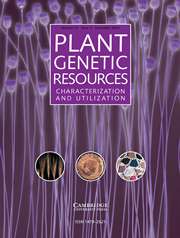No CrossRef data available.
Article contents
Population genetics studies of sour orange in Iran
Published online by Cambridge University Press: 19 February 2025
Abstract
Citrus aurantium also known as sour orange or bitter orange is among important Citrus species of the angiosperm subfamily Aurantioideae of the Rutaceae family. Due to importance of Citrus species as the source of food and medicine, they have been subject of been extensive genetic studies throughout the world. Sour orange plants are cultivated in the north and south parts of Iran but we have very limited genetic data on them. Therefore, the present study was conducted with the aim to study the population genetics of these important fruit plants in the country and provide information on their genetic structure and diversity. We used SCoT molecular markers in 61 plants of 12 sour orange populations. We obtained 33 SCoT bands of which one to two private bands were observed in populations 1 and 5. Genetic diversity parameters determine in the studied populations revealed a low to moderate genetic diversity. Genetic grouping of the populations by UPGMA dendrogram and multidimensional scaling identified two major genetic groups. The studied populations differed significantly in their genetic content as revealed by AMOVA. Distinguishing SCoT loci are identified by Neis'and Gst as well as DAPC analysis. Some of the SCoT loci were significantly associated with geographical variables as revealed by RDA and LFMM analyses.
- Type
- Research Article
- Information
- Copyright
- Copyright © The Author(s), 2025. Published by Cambridge University Press on behalf of National Institute of Agricultural Botany


